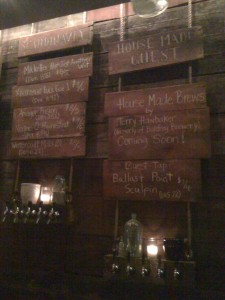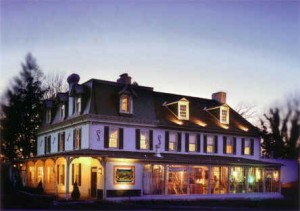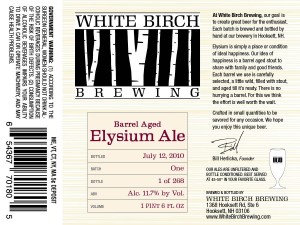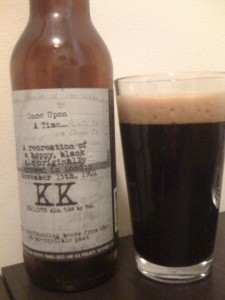 It might seem a bit premature to anoint a venue that has been open only a few short weeks a must-visit for craft beer fans, but The Farmer’s Cabinet is simply that good – in fact, it’s really quite amazing, and not just for the beer.
It might seem a bit premature to anoint a venue that has been open only a few short weeks a must-visit for craft beer fans, but The Farmer’s Cabinet is simply that good – in fact, it’s really quite amazing, and not just for the beer.
The restaurant and bar is latest venture from the team behind Fork & Barrel and a number of highly-regarded other establishments beyond Philadelphia, and they’ve done it in a distinctive style. The detailed interior might best be described as having a slightly steampunk, yet rustic, Weimar Republic theme (minus, of course, the smoking and proto-Nazis) – and this is a very Good Thing. The sense of age is carried through with the lighting (low, but by no means too dark, with many candles) and music (1920s and ’30s jazz, blues and more). The staff are dressed in similarly ‘anywhen’ attire, and they are without question the most knowledgeable and well-trained bartenders one is likely to come across – it’s obvious that they are very familiar with even their more obscure products (more on those in a moment) and they are happy to offer small tasting glasses to the indecisive customer.
There are four distinct sections to The Farmer’s Cabinet; the beer bar is near the front, complete with piano, a more domestic cocktail bar, and two dining areas (though dining at the bar is certainly a handy way to ensure frequent refills). The first dining room, containing long wooden communal tables would not be out of place in a traditional German bierhall, while the other offers more intimate seating toward the rear of the restaurant. Another advantage of sitting at the bar is access to the delicious free popcorn: it’s both sweet and savoury, but quite unlike kettle corn. In contrast to many other bars, The Farmer’s Cabinet doesn’t skimp on the water – there are handy carafes that are always kept full.
And so we arrive at the beer – and a more well-curated selection of smaller European breweries would be difficult to imagine. This is perhaps best illustrated by this anecdote: I love Leipziger Gose – its salty goodness makes it one of my favorite beer styles, and its relative rarity means I typically jump at the chance to have some, especially on tap; the same goes for just about any Berliner Weisse, and there were classic examples of both available. But at The Farmer’s Cabinet, there were so many other intriguing options on offer that I never got around to my beloved German beers. Instead, we sampled hard-to-find beers from Norway, Denmark, Austria, Italy and England (with two cask ales from Thornbridge) – and while ex-Bullfrog Brewery helmsman Terry Hawbaker will shortly be overseeing on-site nanobrewing operations, the United States was represented in the meantime by Ballast Point. There is also a unique bottle list, but given the rotating tap list, it’s easy enough to overlook it. One hopes that the balance currently maintained on the tap list will be maintained – there was a nice mix of lower- to medium-strength beers as well as a few higher-octane brews, which made it easy enough to try a number of different choices without a rapid progression to extreme tipsiness. Each beer on tap is offered in two sizes, which also helps make sampling simple. The cocktail list is just as well-crafted as the beer menu, but I will leave that to mixed-drink experts to evaluate properly – it made very interesting reading.
The food is just as varied and fantastic – it encompasses everything from house-baked breads (including an outstanding sea salt/olive oil sourdough) to great meats and cheeses, to a variety of small plates, sandwiches and interesting entrees. One imagines the desserts are equally tremendous, but clearly more strategy will be required to leave room next time. Even the more ‘pedestrian’ fare is worthy of close scrutiny: the burger was a house-blended mix of brisket and bacon. Let me reiterate that point: the burger had ground bacon mixed into it – it was phenomenal. Everything is made with real ingredients; the farms the meat and produce came from are name-checked on the menu.
None of this comes cheap, but the blow of receiving the check is softened somewhat by its appearance in an old-fashioned cigar box, accompanied by a sea salt caramel. It’s worth every penny, and The Farmer’s Cabinet deserves to become a true destination.








